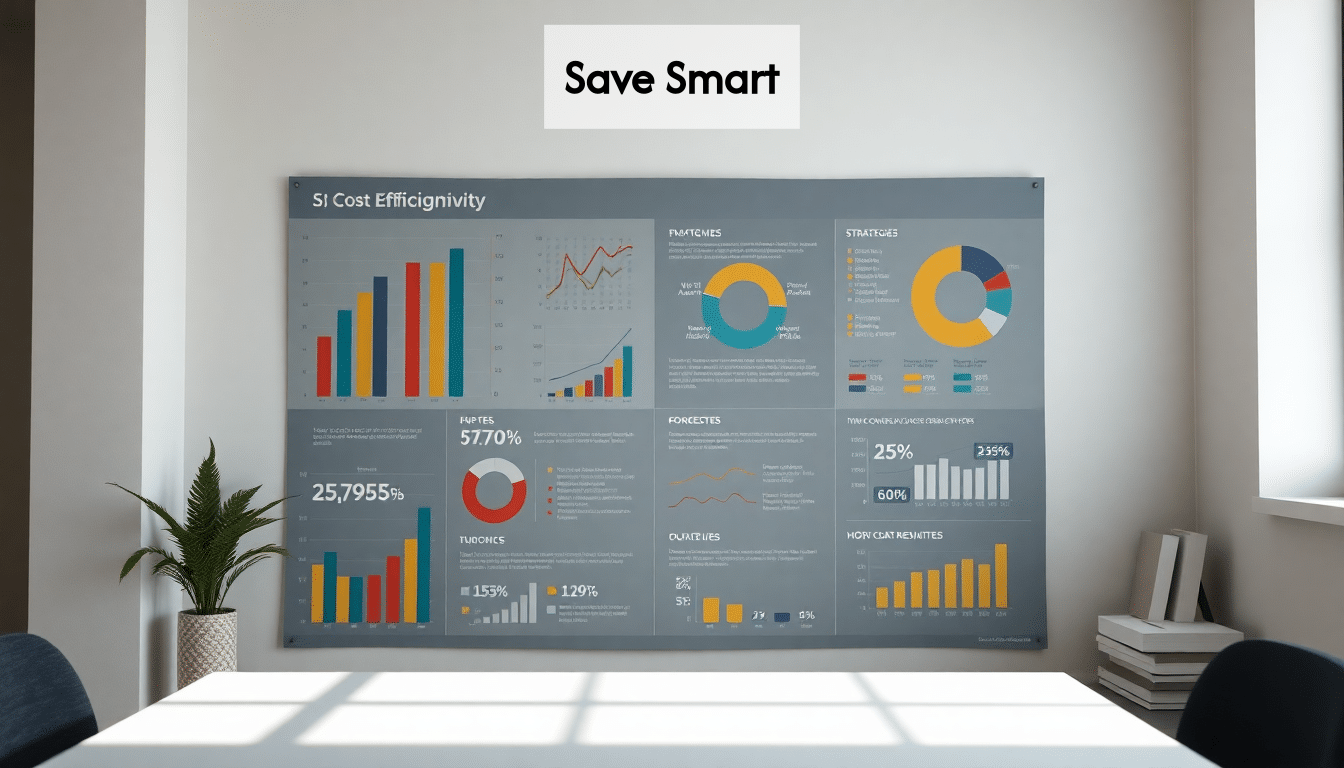Introduction to Construction Resource Management
Welcome to the thrilling world of construction resource management, where organization meets innovation and chaos is just a coffee break away! As someone who’s navigated the complexities of managing resources in construction, I can tell you firsthand that having a solid grasp of construction resource management can make or break a project. The ultimate resource of a firm is its people, materials, and equipment. So, let’s dive in and unpack what this means for all of us in the field.
Construction resource management encompasses the strategic allocation and utilization of resources necessary for a project to succeed. This means not only planning how to use labor, materials, and machinery but also deeply understanding resource management in the construction industry—especially how to do it effectively and efficiently.
Imagine you’re at the helm of a ship navigating through stormy seas; without accurate construction resource planning, you may just find yourself drifting off course. Whether you’re overseeing a high-rise building or orchestrating a small renovation, managing resources in construction determines timelines, budgets, and quality outcomes.
By employing various methods and construction resource management software, you can optimize resource allocation, streamline processes, and enhance productivity. From the foundation to the rooftop, effective resource management isn’t just a buzzword; it’s essential for delivering successful projects that satisfy clients and stakeholders alike.
This journey will cover strategies and tools that help with resource planning in construction, and I’m excited to share insights that will make your management systems for construction sharper, smarter, and way more efficient. Let’s get started on mastering construction resource management together!
The Importance of Resources Management in Construction
When I think about what truly drives the construction industry, the phrase “resources management in construction” immediately springs to mind. Imagine trying to build a house without a solid understanding of what materials you have at hand or how many workers are available—it’s like attempting to bake a cake without knowing if you have flour or eggs. Recipe for disaster, right? Here’s why mastering resources management is not just important but crucial.
Cost Efficiency and Budget Adherence

Effective construction resource management has a direct impact on project budgets. By properly planning and allocating resources, we can significantly reduce waste and avoid the dreaded budget overruns that keep project managers up at night. As the saying goes, “A penny saved is a penny earned,” and in the construction industry, every penny counts.
Timely Project Delivery
In a sector where timelines are everything, understanding how to manage resources can be the fine line between success and what I like to call “let’s not talk about that project that went way over deadline.” With the right strategies—like implementing construction resource scheduling software—project managers can ensure that every resource is allocated at the right time to keep projects on track.
Quality Control
The importance of resources in construction management doesn’t stop at finances; it also directly influences the quality of the final product. When you have the right resources in the right places, you’re more likely to meet quality standards and deliver a result that pleases clients. No builder wants to hear, “This isn’t what I envisioned!”—trust me.
Risk Mitigation
Uncertainty is an inherent part of the construction process. However, with effective resources management in construction, many of these risks can be mitigated. By having a detailed plan for resource allocation, companies can foresee potential bottlenecks or shortages, allowing them to take proactive measures.
In summary, resources management in construction is not just an operational concern; it’s a strategic necessity. As long as we remember that effective management can be the difference between project success and failure, we will be well on our way to mastering construction resource management! Stay tuned for more insights as we explore how to put these principles into practice.
Key Components of Construction Resource Planning
As we roll up our sleeves and dive deeper into the nitty-gritty of construction resource management, it’s essential to identify the key components of construction resource planning. Think of it as the backbone of any successful project. Without these components, you might as well be constructing a house of cards—impressive at first glance, but a slight breeze could bring it tumbling down! So, let’s break it down, shall we?
1. Resource Identification
The first step in effective resource planning is to identify all the resources required for your project. This includes everything from materials, labor, and equipment to external services and even technology. You wouldn’t want to show up at a job site only to realize you forgot crucial supplies or need specialized labor at the last minute. A clear inventory helps immensely, so get those lists ready!

2. Resource Allocation
Once you’ve identified your resources, it’s time for the fun part: allocation! This involves determining how and when each resource will be used throughout the construction process. Here, construction resource scheduling software can be a game changer by allowing you to visualize the timeline and ensure that resources are deployed effectively. Picture it as a dance—everyone needs to be in sync for the performance to shine!
3. Resource Leveling
Resource leveling is about balancing resource usage to avoid overloading them or causing delays. You wouldn’t want your construction crew to be burnt out by working overtime while equipment sits idly! Finding that sweet spot ensures productivity and keeps morale high—because nobody enjoys the chaos of last-minute scrambles.
4. Monitoring and Adjustments
In the ever-evolving landscape of construction, it’s crucial to have a plan for monitoring resources throughout the project and making adjustments as necessary. This dynamic approach allows you to respond to any hiccups along the way effectively. After all, the construction environment can be as unpredictable as a toddler at nap time!
5. Feedback and Analysis
Finally, once the project is complete, it’s time for feedback and analysis. Gathering insights on what went smoothly and what didn’t offers invaluable lessons for future construction resource planning. Sharing these insights with the team fuses experience and knowledge, making everyone smarter for the next big project.
By mastering these key components of construction resource planning, not only can we enhance project execution, but we can also contribute to the overall success and sustainability of the construction industry. Let’s keep building those foundations strong!
Resources in Construction Management: Types and Allocation
Navigating the world of construction resource management feels a lot like piecing together a puzzle where each piece represents a different type of resource. Understanding these resources and how to allocate them effectively is crucial for any construction manager. So, let’s unravel the types of resources you’ll be managing in your construction projects and how best to allocate them—because no one wants to end up with a jigsaw puzzle that simply doesn’t fit!
1. Human Resources
When we refer to human resources in construction management, we’re talking about the skilled laborers, project managers, and support staff who make everything happen. Allocating human resources means not only placing the right people on the right tasks but also considering their skills and availability. Ever tried directing traffic with all the lights red? Exactly! You need to know who’s ready for heavy lifting and who’s more suited for quality checks.
2. Materials
The heart of any construction project revolves around materials. This group includes everything from concrete and steel to fixtures and finishes. When it comes to construction resource planning for materials, accurate forecasting is key. An overabundance of resources equals wastage, while a shortage can lead to delays. Pro tip: Engage suppliers in early discussions and set orders well in advance to maintain quality supply chains!
3. Equipment
Heavy machinery and tools are vital resources in construction. Effective resource management in construction means knowing what equipment you need, when you need it, and how long you’ll be using it. Managing the allocation of these resources also involves scheduling equipment to prevent conflicts. If Bob’s backhoe is at site A while Joe’s excavator is stuck at site B, you might find your timelines slipping faster than an ice cube on a warm day!
4. Financial Resources
Let’s get real—money makes the construction world go ‘round. Always factor in the budgets, cash flow, and funding sources when planning for financial resources. Adequate resource allocation ensures you don’t run into sticky financial situations that could derail projects. Managing resources in construction requires a close watch on financial health to ensure sustainability and profitability.
5. Time
Last but certainly not least, we can’t ignore time! Every project comes with a timeline that needs to be respected, making time a critical resource in construction management. Allocating time effectively ensures you meet deadlines, which is key to client satisfaction. Utilizing construction resource scheduling software can help streamline this process and keep everyone on track.
In a nutshell, each resource plays its role and deserves its own spotlight in the grand performance of construction management. Mastering the types of resources and their allocation ensures you not only build structures but also relationships, trust, and credibility in the industry. Keep these principles close to your heart, and you’ll lay the groundwork for success!
Effective Management Systems for Construction Resources
When it comes to construction resource management, relying merely on intuition or outdated spreadsheets can feel like trying to navigate a construction site blindfolded—nobody wants that kind of chaos! Instead, implementing effective management systems for construction resources is key to transforming the way projects are executed. So, let me take you through the essential systems and tools that can streamline your operations and help you thrive in the construction industry.
1. Construction Resource Management Software
In today’s digital age, construction resource management software is a game changer. These tools enable teams to track and allocate resources with precision, providing real-time insights into availability and utilization. With features like project tracking, reporting, and resource allocation capabilities, this software can significantly reduce errors and improve collaboration among project teams. Companies that leverage these tools often report enhanced efficiency, cost savings, and ultimately, lower project risks.
One standout option is Procore, known for its comprehensive suite that not only focuses on resource management but also integrates with various aspects of project management. You’ll wonder how you ever managed without it!
2. Construction Resource Scheduling Software
Another vital player in effective management systems is construction resource scheduling software. This tool helps with the timely allocation of resources, ensuring that materials, equipment, and labor are available when needed. Imagine a seamlessly organized approach to scheduling, where everyone knows what they should be working on and when—no confusion, no wasted time, and certainly no grumpy workers!
3. Collaboration Platforms
Communication is essential in any construction setting, and collaboration platforms like Microsoft Teams or Slack can facilitate transparent discussions between teams. These systems allow project managers to share updates, changes in resources, and any potential issues instantly. Forget relying on face-to-face meetings that can feel like getting a cat to take a bath—digital collaboration makes everything more fluid and less chaotic.
4. Mobile Applications
As we navigate job sites, the need for portable technology becomes crystal clear. Mobile applications provide access to construction resource management tools right from the field. This accessibility means workers can update their availability, request resources, or communicate changes without having to step foot in the office, promoting real-time adjustments and rapid responses.
5. Analytics and Reporting Tools
Finally, to track how well we’re managing our resources, analytics and reporting tools offer invaluable insights. These tools help gauge the effectiveness of resource allocation and can signal when adjustments are needed. Regularly assessing performance through data not only keeps you on track but also highlights areas for improvement. Think of it as driving with an onboard GPS that helps prevent you from taking all the wrong turns!
In conclusion, implementing effective management systems for construction resources is no longer a luxury but a necessity. By harnessing technology in project management and resource allocation, we can not only enhance efficiency but also bring our construction dreams to life with precision and success. So grab your hard hats and let’s get to work on making our resource management smoother than ever!
Construction Resource Management Software: A Game Changer
If you’re in the construction business and haven’t yet dipped your toes into the world of construction resource management software, let me tell you—you’re missing out on something absolutely transformational. Picture this: instead of piles of paperwork and frantic phone calls trying to track down how many cement bags you’ve got left, you have a sleek, user-friendly software at your fingertips that does all the heavy lifting for you. Sounds dreamy, right? Let’s explore why this software is indeed a game changer in the construction industry.
1. Real-Time Data and Insights
One of the biggest perks of using construction resource management software is access to real-time data. Gone are the days of waiting for weekly reports that may already be outdated. With the right software, you can instantly see resource availability, project timelines, and potential delays as they happen. Imagine asking a colleague how many tools are left on site and being able to check it on your phone in mere seconds. Now, that’s efficiency!
2. Seamless Collaboration
Effective communication is the lifeblood of construction projects. Construction resource management software provides a centralized platform where project teams can share updates, document changes, and track progress. This reduces miscommunication and ensures that everyone is on the same page (which, let’s be honest, saves a lot of hair-pulling moments). With collaboration tools integrated right into the software, it’s like throwing everybody a lifeline where they can get info and updates in real time, making project management smoother.
3. Resource Optimization
Imagine having a fancy crystal ball that tells you how to use your resources most effectively—well, this software kind of does that! By analyzing historical data and current resource usage, it can help project managers forecast needs and optimize resource allocation. If you learn that certain projects typically need more manpower (or fewer lunch breaks!), you can adjust personnel assignments accordingly.
4. Cost Control
Nobody enjoys seeing costs spiral out of control. The beauty of construction resource management software is that it allows you to keep a close eye on budgets and expenditures in real time. You can track costs associated with resources closely and make swift adjustments before things get out of hand. Instead of a project being a financial black hole, you can rest easy knowing you’re on top of your game, monitoring, and controlling expenses every step of the way.
5. Reporting and Analysis
Finally, let’s talk numbers. Most construction resource management software offers powerful reporting and analytics features. These tools generate easy-to-read reports and insights, helping you assess resource utilization and discover areas for improvement. The data illustrates where you did great and where you might need to tweak your approach for future projects, making it an invaluable resource for learning and growth.
In conclusion, the integration of construction resource management software into your workflows can truly be a game changer. From improving real-time data access to enhancing communication, this technology empowers teams to work smarter, cut costs, and streamline operations. So if you haven’t yet adopted this amazing tool, what are you waiting for? The future of construction management is right here, and it’s time to embrace the technological revolution!
Strategies for Successful Resource Planning in Construction
In the construction world, successful resource planning isn’t just a nice-to-have—it’s absolutely essential for staying on track and within budget. Think of it as the GPS for your construction project, guiding you through the twists and turns of managing labor, materials, and equipment. So, let’s roll up our sleeves and dive into some tried-and-true strategies that will help ensure your resource planning is as robust as the structures we build!
1. Comprehensive Resource Assessment
Before diving into any project, it’s crucial to conduct a comprehensive assessment of resources required. This should include analyzing past projects, knowing your available labor pool, and evaluating the types and quantities of materials needed. Doing so will set a solid foundation that ensures you’re not caught off guard when materials run low or you don’t have enough hands on deck. A well-prepared plan reduces uncertainties and leads to smoother execution.
2. Develop a Detailed Project Timeline
I can’t stress enough how valuable a well-structured project timeline is for construction resource planning. Break the project down into phases, and identify when each resource will be needed. Mapping out your timeline allows you to visualize resource allocation and makes it easier to avoid bottlenecking. Tools like Gantt charts or project management software can also assist in visualizing these timelines effectively.
3. Embrace Technology
Incorporating construction resource management software is more than just a trend; it’s where efficiency meets effectiveness. Utilizing technology helps streamline scheduling, tracking resources, and analyzing data. By embracing tools that integrate with your existing systems, you’ll find that planning becomes less cumbersome, helping teams collaborate and communicate seamlessly.
4. Implement a Flexible Approach
Construction projects rarely go exactly as planned. Being adaptable is crucial for responsive resource management. Anticipate potential disruptions, whether they’re related to supply chain issues or changes in project scope. Building flexibility into your resource allocation allows you to pivot efficiently without derailing the entire project. Consider developing contingency plans as part of your strategy to prepare for inevitable surprises.
5. Regular Review and Feedback Loops
Finally, effective resource planning isn’t a one-and-done task. Regularly review your resource allocation and assess performance throughout the project. Scheduling feedback sessions with your team allows you to gather insights about what’s working well and where adjustments are needed. Plus, it fosters a culture of open communication and continuous improvement.
In conclusion, implementing these strategies will go a long way in supporting successful resource planning in construction. By conducting thorough assessments, utilizing technology, and maintaining flexibility, you’ll not only optimize resource management but also enhance the overall project outcome. Let’s take these strategies and use them like a blueprint to build a future where resource management is as solid as the structures we’re creating!
Challenges in Resource Management in Construction and Solutions
In the dynamic world of construction, managing resources is akin to juggling—one wrong move, and everything could come crashing down. So, what are the challenges we face in resource management in construction, and how can we turn those challenges into opportunities for improvement? Let’s explore some common hurdles and the practical solutions to tackle them head-on!
1. Labor Shortages
One of the most pressing challenges in the construction industry is the ongoing labor shortage. With experienced workers retiring faster than fresh talent enters the workforce, project managers often find themselves scrambling to fill gaps.
Solution: To combat this, I recommend investing in training programs to upskill existing workers. Partnering with local trade schools for internships or apprenticeships can also help cultivate new talent. By creating a supportive environment for young workers and promoting construction as a viable career path, we can attract fresh eyes and hands to our field.
2. Supply Chain Disruptions
The construction industry is no stranger to supply chain issues—COVID-19 has only exacerbated this longstanding concern. With unpredictable delays in material deliveries, projects can stall, leading to budget overruns and disappointed clients.
Solution: To minimize the impact of supply chain disruptions, develop strong relationships with suppliers and consider diversifying your supplier network, so you’re not reliant on a single source. Additionally, incorporating just-in-time (JIT) inventory practices can help streamline material delivery and reduce holding costs, ensuring that materials arrive precisely when they’re needed.
3. Inadequate Resource Visibility
Many teams still rely on outdated methods, like spreadsheets and phone calls, leading to poor visibility over resource allocation. Without a clear view of resource status, it becomes challenging to make informed decisions, often resulting in inefficiencies.
Solution: Investing in construction resource management software is a game-changer here! These systems provide clear visibility into resource allocation, enabling project managers to track materials, labor, and equipment utilization in real-time. The clearer the picture, the better equipped you are to make adjustments as needed.
4. Budget Constraints
Tight budgets can be a significant challenge for construction projects, often leading to cut corners and compromised quality.
Solution: To stay within budget, thorough upfront planning is key. Break down project costs meticulously and create contingency budgets to address unexpected expenses. Periodic financial reviews will also help adjust projections and make informed decisions that keep projects aligned with financial goals.
5. Communication Breakdown
I can tell you from experience, ineffective communication can lead to delays, misunderstandings, and a general sense of chaos on-site.
Solution: Foster an environment of transparency by utilizing collaboration tools and apps that centralize communication. Regularly scheduled meetings—both on-site and virtual—are crucial to facilitate open dialogue and keep everyone in the loop. The more connected your team is, the smoother the operation will flow.
In summary, despite the numerous challenges that can arise in resource management in construction, there are solutions. By addressing labor shortages, diversifying supply chains, leveraging technology, maintaining budget discipline, and enhancing communication, you can transform these hurdles into stepping stones for success. With a bit of creativity and diligence, we can navigate these challenges and keep our projects running like well-oiled machines!
Conclusion: The Ultimate Resource of a Firm is Its People
As we wrap up our deep dive into construction resource management, I want to leave you with a fundamental takeaway that resonates throughout this entire discussion: the ultimate resource of a firm is its people. No amount of cutting-edge software or advanced scheduling tools can replace the value of skilled, motivated individuals working together towards a common goal.
In an industry marked by constant change and demands, cultivating a strong, skilled workforce is paramount. Investing in training and development not only enhances individual skills but also fosters a culture of teamwork and collaboration. Happy, engaged employees are typically more productive, efficient, and dedicated to achieving project success. This is where the heartbeat of resource management lies—understanding that technology and processes are only as effective as the people behind them.
Moreover, as we discussed, the challenges of labor shortages, supply chain disruptions, and budget constraints can be daunting. However, with a committed team that adheres to well-defined management systems, these challenges can be tackled head-on. By promoting open communication and leveraging each team member’s strengths, you can build an environment that thrives even in adversity.
To sum it up, as we master construction resource management, let’s always remember that the real foundation of our success is built upon the dedication and talent of the people in our organizations. Nurturing this ultimate resource is how we not only ensure the success of our current projects but also pave the way for a more robust construction industry in future endeavors.
As you embark on your own journey of mastering resource management, keep your team close, invest in their growth, and embrace their collective wisdom. Together, we can construct not just buildings but an enduring legacy in the world of construction! Thank you for joining me on this enlightening path, and may your projects flourish with the strength of your greatest asset – your people!
Frequently Asked Questions
What is construction resource management?
Construction resource management involves the strategic allocation and utilization of materials, labor, and equipment necessary for a construction project to succeed. It aims to optimize resource allocation, improve efficiency, and ensure projects are completed on time and within budget.
Why is resource management important in construction?
Effective resource management is crucial because it directly impacts cost efficiency, timely project delivery, and quality control. It helps in mitigating risks associated with resource shortages and avoids budget overruns by ensuring proper planning and allocation.
What are the key components of construction resource planning?
The key components of construction resource planning include resource identification, allocation, leveling, monitoring and adjustments, and feedback analysis. Each component plays a critical role in ensuring resources are effectively managed throughout the construction process.
How can technology improve construction resource management?
Technology, particularly construction resource management software, enhances resource management by providing real-time data, improving collaboration, optimizing resource allocation, and enabling better cost control. It ensures efficient planning and execution, leading to higher project success rates.
Unlock Your Construction Potential with The Amundson Group!
In “Mastering Construction Resource Management: Strategies for Success”, we explored how effective resource management is the cornerstone for successful construction projects. Struggles like labor shortages, supply chain disruptions, and inadequate resource visibility can stymie even the best-laid plans. But what if you had a dedicated partner to navigate these challenges?
At The Amundson Group, we specialize in connecting skilled construction professionals like you with top employers in the industry. Whether you’re a job seeker looking to elevate your career or a company in need of reliable talent acquisition solutions, we have the resources to address your specific needs:
- Access a Strong Network: Engage with our comprehensive platform showcasing opportunities across heavy civil, multi-family, waste water, and more!
- Tailored Job Placement Services: We prioritize finding the right fit for both candidates and companies, ensuring quality placements that enhance productivity.
- Industry Insights and Support: Leverage our expertise to gain insights into market trends, increasing your visibility in an ever-evolving sector.
Don’t let resource challenges hold you back!
Take the first step towards success today. Visit The Amundson Group and discover how we can help you thrive in construction resource management. Join us now—your next opportunity is just a click away!





